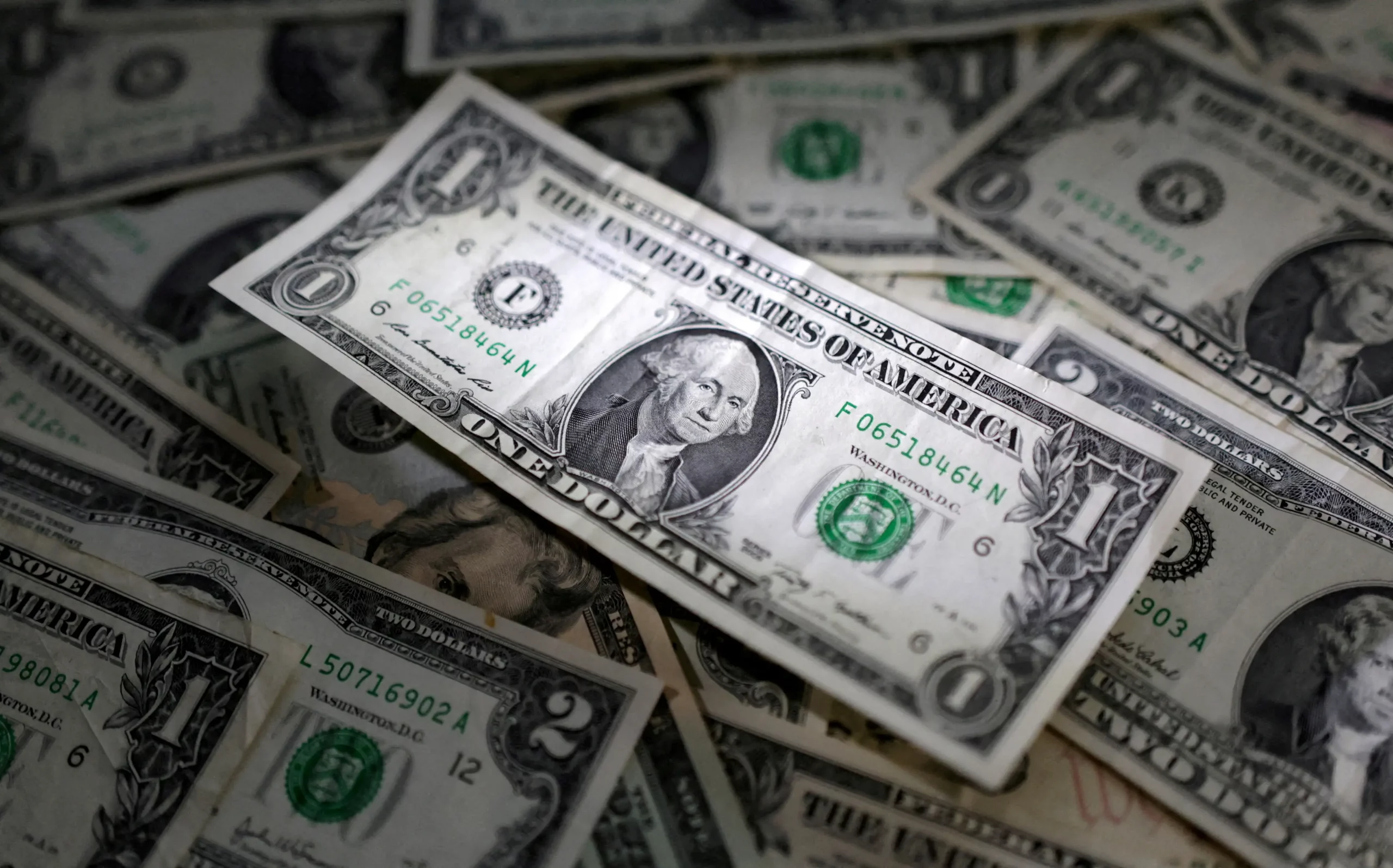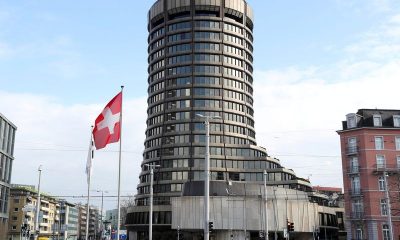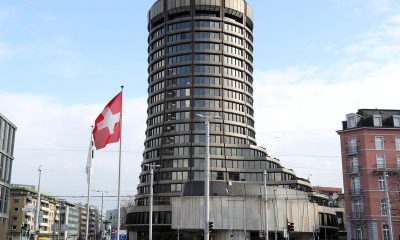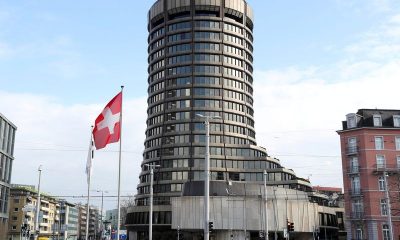Economy
Forever in debt: Why U.S. loans are getting longer

Consumers facing high asset prices and rising interest rates have a few loan options. None are particularly attractive.
Buyers of homes or new cars might be better off waiting. But if you must go ahead, either face taking on a big monthly payment, or stretching out the loan term to keep the monthly bill down – as many are doing.
New car loans lasting 73-84 months (over six years) rose to 34.4% of the market in 2022 from 28.6% in 2018, according to auto information site Edmunds. A few borrowers are going even longer, with less than 1% of new car loans lasting 85 months or more.
“It’s a reflection of the world we live in: Transportation affordability is a significant problem, as is housing,” said Ira Rheingold, executive director of the National Association of Consumer Advocates.
“More and more dealers are offering extended loan terms: Instead of three or four or five years, they are now going way beyond that,” Rheingold added. “It’s the same thing with housing: Sometimes the only way to get someone into a house is to increase the mortgage length.”
Ultra-long loan terms are showing up in the housing market.
Homeowners straining to pay their Federal Housing Administration (FHA) mortgages can now apply to have their loans extended to 40 years to reduce monthly payments.
For personal loans closed through the LendingTree platform, the median term in May rose to 60 months from 57 months in April, and 54 months in March.
Stretching out a loan is not always a bad idea. It can be a solid foundation for family wealth if fixed at a low rate for an asset that appreciates over time such as a 30-year mortgage.
One principle applies, no matter what the asset, Rheingold advised. “Be very wary of extending the life of your loan, just to make it affordable in the short-term.”
Here are few tips from financial experts:
DO THE MATH
A lower monthly payment may seem attractive now, but a longer term loan will end up costing more in interest, likely at a higher rate to compensate the lender for additional risk. That is why such loans appeal to banks, but less to borrowers.
“Buyers should be very wary of taking lenders up on those offers,” said financial planner Eric Scruggs of Stoneham, Massachusetts.
For example, a $35,000 car, with a five-year loan at 3% interest, would have a total of $37,734 in payments, he said. That same car financed over seven years at 5% would cost $41,554 – $3,820 more.
MAKE SOME HARD DECISIONS
If you must keep pushing out the loan term to afford an asset, that may be a signal to get real.
“If you have to stretch out to a seven-year loan to buy a car, perhaps you should buy a less expensive car,” said Brandon Gibson, a Dallas financial planner.
BEWARE OF SLIDING ‘UNDERWATER’
Extending loans further into the future means increasing the amount of time you could be “underwater,” or owe more than the asset is worth. That certainly happens with cars, but also with homes in eras of declining prices, as during the subprime mortgage crisis of 2007 to 2008.
“This situation triggers a host of issues,” said Erin Witte, director of consumer protection for the Consumer Federation of America. “Being underwater can make it very difficult to trade in a car in future when you need a new one.
“Consumers are faced with the situation of ‘negative equity,’ where they still owe money on the car they want to trade in and end up rolling that debt into the finance contract on the new car,” Witte added. “Unfortunately, that means the consumer is now paying interest on that debt twice.”
Economy
Russian central bank says it needs months to make sure CPI falling before rate cuts -RBC


© Reuters. Russian Central Bank Governor Elvira Nabiullina attends a news conference in Moscow, Russia June 14, 2019. REUTERS/Shamil Zhumatov/File Photo
MOSCOW (Reuters) – Russia’s central bank will need two to three months to make sure that inflation is steadily declining before taking any decision on interest rate cuts, the bank’s governor Elvira Nabiullina told RBC media on Sunday.
The central bank raised its key interest rate by 100 basis points to 16% earlier in December, hiking for the fifth consecutive meeting in response to stubborn inflation, and suggested that its tightening cycle was nearly over.
Nabiullina said it was not yet clear when exactly the regulator would start cutting rates, however.
“We really need to make sure that inflation is steadily decreasing, that these are not one-off factors that can affect the rate of price growth in a particular month,” she said.
Nabiullina said the bank was taking into account a wide range of indicators but primarily those that “characterize the stability of inflation”.
“This will take two or three months or more – it depends on how much the wide range of indicators that characterize sustainable inflation declines,” she said.
The bank will next convene to set its benchmark rate on Feb. 16.
The governor also said the bank should have started monetary policy tightening earlier than in July, when it embarked on the rate-hiking cycle.
Economy
China identifies second set of projects in $140 billion spending plan


© Reuters. FILE PHOTO: Workers walk past an under-construction area with completed office towers in the background, in Shenzhen’s Qianhai new district, Guangdong province, China August 25, 2023. REUTERS/David Kirton/File Photo
SHANGHAI (Reuters) – China’s top planning body said on Saturday it had identified a second batch of public investment projects, including flood control and disaster relief programmes, under a bond issuance and investment plan announced in October to boost the economy.
With the latest tranche, China has now earmarked more than 800 billion yuan of its 1 trillion yuan ($140 billion) in additional government bond issuance in the fourth quarter, as it focuses on fiscal steps to shore up the flagging economy.
The National Development and Reform Commission (NDRC) said in a statement on Saturday it had identified 9,600 projects with planned investment of more than 560 billion yuan.
China’s economy, the world’s second largest, is struggling to regain its footing post-COVID-19 as policymakers grapple with tepid consumer demand, weak exports, falling foreign investment and a deepening real estate crisis.
The 1 trillion yuan in additional bond issuance will widen China’s 2023 budget deficit ratio to around 3.8 percent from 3 percent, the state-run Xinhua news agency has said.
“Construction of the projects will improve China’s flood control system, emergency response mechanism and disaster relief capabilities, and better protect people’s lives and property, so it is very significant,” the NDRC said.
The agency said it will coordinate with other government bodies to make sure that funds are allocated speedily for investment and that high standards of quality are maintained in project construction.
($1 = 7.1315 renminbi)
Economy
Russian central bank says it needs months to make sure CPI falling before rate cuts -RBC


© Reuters. Russian Central Bank Governor Elvira Nabiullina attends a news conference in Moscow, Russia June 14, 2019. REUTERS/Shamil Zhumatov/File Photo
MOSCOW (Reuters) – Russia’s central bank will need two to three months to make sure that inflation is steadily declining before taking any decision on interest rate cuts, the bank’s governor Elvira Nabiullina told RBC media on Sunday.
The central bank raised its key interest rate by 100 basis points to 16% earlier in December, hiking for the fifth consecutive meeting in response to stubborn inflation, and suggested that its tightening cycle was nearly over.
Nabiullina said it was not yet clear when exactly the regulator would start cutting rates, however.
“We really need to make sure that inflation is steadily decreasing, that these are not one-off factors that can affect the rate of price growth in a particular month,” she said.
Nabiullina said the bank was taking into account a wide range of indicators but primarily those that “characterize the stability of inflation”.
“This will take two or three months or more – it depends on how much the wide range of indicators that characterize sustainable inflation declines,” she said.
The bank will next convene to set its benchmark rate on Feb. 16.
The governor also said the bank should have started monetary policy tightening earlier than in July, when it embarked on the rate-hiking cycle.

 Forex3 years ago
Forex3 years agoForex Today: the dollar is gaining strength amid gloomy sentiment at the start of the Fed’s week

 Forex3 years ago
Forex3 years agoUnbiased review of Pocket Option broker

 Forex3 years ago
Forex3 years agoDollar to pound sterling exchange rate today: Pound plummeted to its lowest since 1985

 Forex3 years ago
Forex3 years agoHow is the Australian dollar doing today?

 Cryptocurrency3 years ago
Cryptocurrency3 years agoWhat happened in the crypto market – current events today

 World3 years ago
World3 years agoWhy are modern video games an art form?

 Commodities3 years ago
Commodities3 years agoCopper continues to fall in price on expectations of lower demand in China

 Economy3 years ago
Economy3 years agoCrude oil tankers double in price due to EU anti-Russian sanctions



























